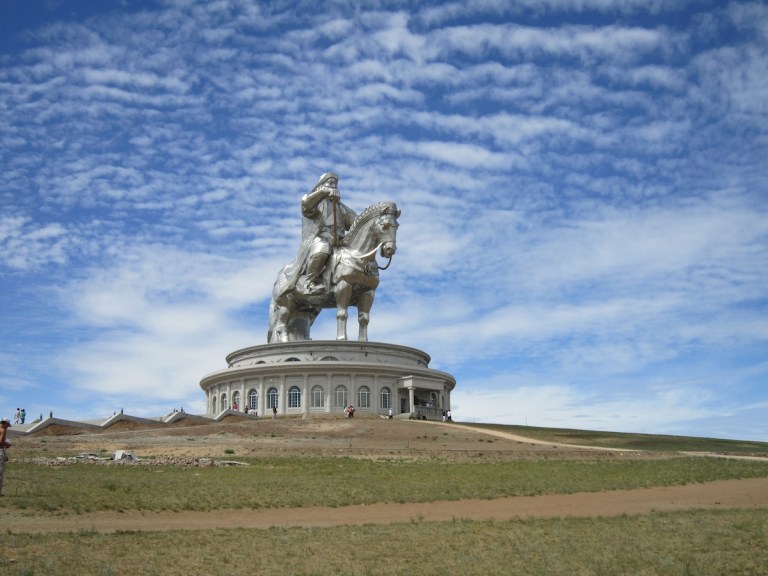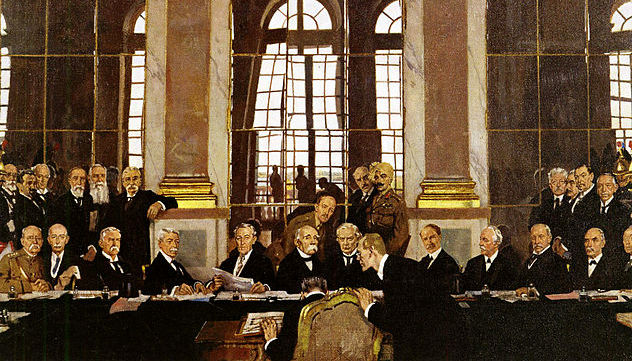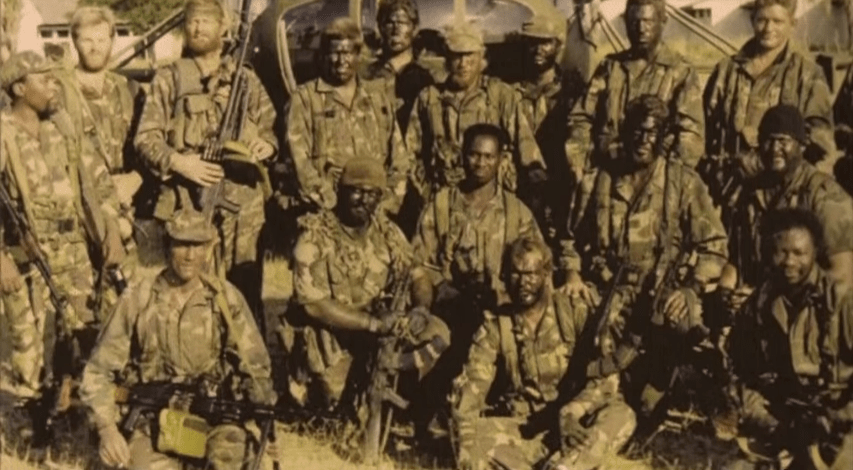
8 Private Mercenary Armies From History And Today That Had The Power To Topple Nations
Mercenaries, then and now, want to make money and go home, not stick around and become targets themselves. For that, we should all be glad.
By ![]() Daniel Hayes
Daniel Hayes
The notion of national armies in the service of some specific flag both eternally and always is really a pretty recent phenomenon. Prior to the 18th century, power was held more locally in cities rather than as we see today in America’s federal system of government. Cities, individuals, and companies often kept their own armies rather than waiting for weeks on the King to send his own armies to help.
Projected into the present, this would be like New York City having Blackwater USA as its own standing army that doubles as a police force. An odd concept to be sure. This stratification of power often resulted in the best mercenaries going to the highest bidder regardless of the cause they’d be fighting for. Certainly, some were more loyal than others and some were more powerful than others. Below are 8 historic mercenary armies that were so powerful that they had the ability to determine the direction of nations as well as some of their modern equivalents that most people aren’t even aware exist.
Don’t expect to see Blackwater USA (formerly known as Xe and now called Academi) on this list. They couldn’t hold a candle to most of these organizations.
1. Executive Outcomes
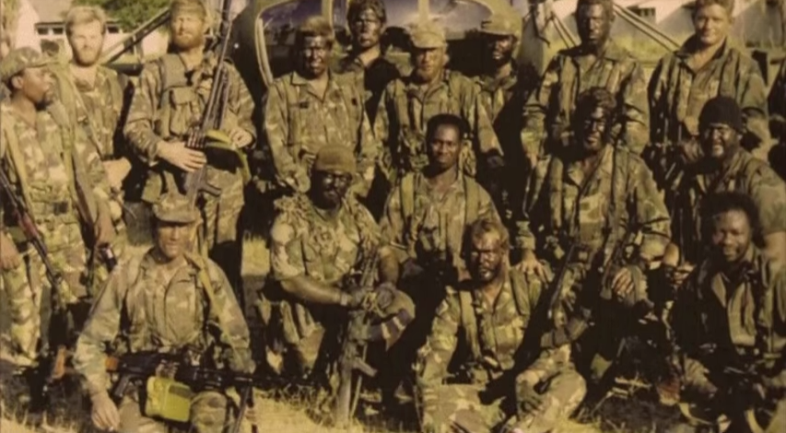
Truly one of the most notorious private armies in the modern era is the former South African firm, Executive Outcomes (EO). Formed in 1989 as apartheid was dissolving under a renewed and invigorated African National Congress led by Nelson Mandela while, at the same time, the South African military was being cut down. EO subsequently recruited a number of those soldiers who were battle hardened and looking for mercenary work. At their peak, EO had a staff of about 3,500, 3,000 of which were actual soldiers.
Once formed, EO wasted no time taking contracts all over the African continent and becoming a hated entity in many corners as well. Among their more well known exploits, In 1995 Sierra Lione, EO put down an attempt to take control of the diamond mines there. The contract to mine Sierra Lione’s diamonds was then granted to a company linked to EO through cross-ownership. What a coincidence…
In 1994 Angola they sided with the previously Soviet-backed government against U.S. and South African backed opposition. With EO providing direct combat support to and training of the Angolan government military, they played a key role in ending the civil war there. Only under U.S. pressure did the government of Angola terminate EO’s contract. Civil war broke out again soon thereafter.
https://twitter.com/XanderHBMillar/status/448908471409184769
In addition to these official actions, there are a number of allegations that EO took part in the forcible repression of indigenous African peoples in the service of corporations looking to profit from the continent’s national resources. EO has provided military training to a number of other African nations including Malawi, Mozambique, Botswana, Madagascar and Algeria.
At some point, EO became a part of the Strategic Resource Corporation. As recently as April 2015, individuals previously affiliated with EO were hired by the Nigerian government to battle members of the Islamic extremist group Boko Haram in northern Nigeria although this was all kept very hush hush. However, these mercenaries are now employed under a new corporate banner, STTEP International.
https://twitter.com/zoomarang/status/594621065327878145
STTEP was able to effectively route Boko Haram wherever they came into contact with them. This despite many of the former EO mercenaries in the group being far older than their adversaries. These attacks on Boko Haram are directly responsible for freeing 670 Nigerian women and girls some of whom, you might recall, may have been kidnapped last year resulting in the #BringBackOurGirls campaign on Twitter.
Unlike any other modern mercenary group, not only could Executive Outcomes topple governments or keep them in power, they effectively have, repeatedly.
2. The Swiss Guard
You’re probably more familiar with the modern day Swiss Guard which exclusively serves the Vatican (an independent nation, remember) but at their peak, this Medieval mercenary company was the most notorious and powerful in all of Europe. Before they discovered the wonders of banking, Switzerland was a very poor country and many of their more adventurous sons sought glory and wealth throughout warfare. The Swiss Guard comprised what would today be called a Special Forces unit and they were elite.
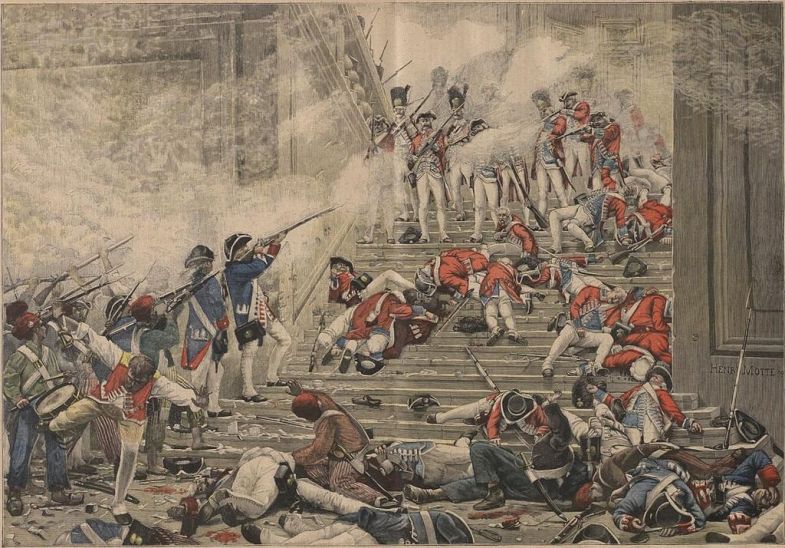
The Swiss Guard fought some of its most remembered battles during the French Revolution when about 600 died defending the French monarchy in 1792. Those that weren’t killed during the battle were massacred afterward. All but a few hundred of the Swiss Guard were wiped out in France in fighting all over the country.
However, they would return a little over a two decades later when Napoleon took over France and huge swaths of Europe. They were considered so competent that a quarter of Napoleon’s elite Imperial Guard at that time was made up of Swiss troops.
A monument was then built to commemorate the deaths of those Swiss guardsmen who died during the revolution.
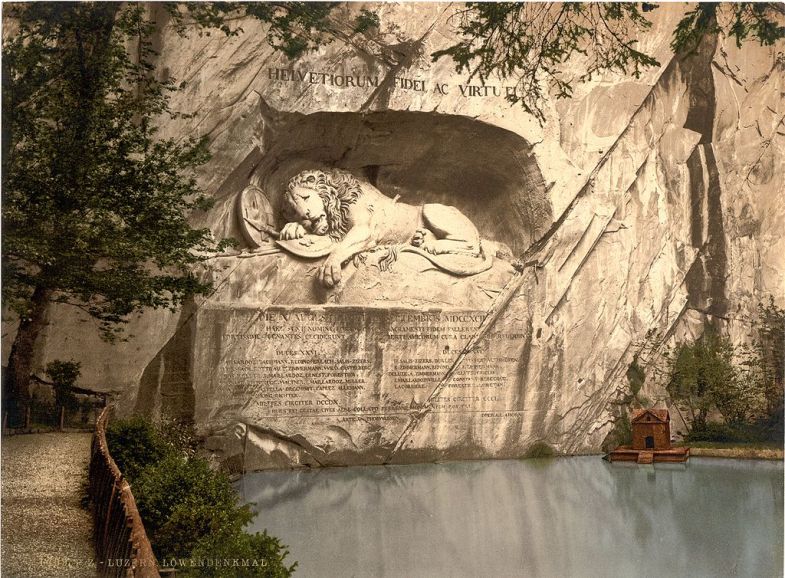
After Napoleon was defeated many members of the Swiss Guard joined the French Foreign Legion where they fought in Algeria.
Swiss troops were considered so valuable that in 1762 the Portuguese made a deal worth 1,480,00 reis (Portuguese money) for 809 Swiss guardsmen to serve for 6 years, a sum that came to 4,537 reis a month. It’s impossible to say what this would equate to today in U.S. dollars but I think it’s safe to say much, much more.
3. The Goths Take Rome
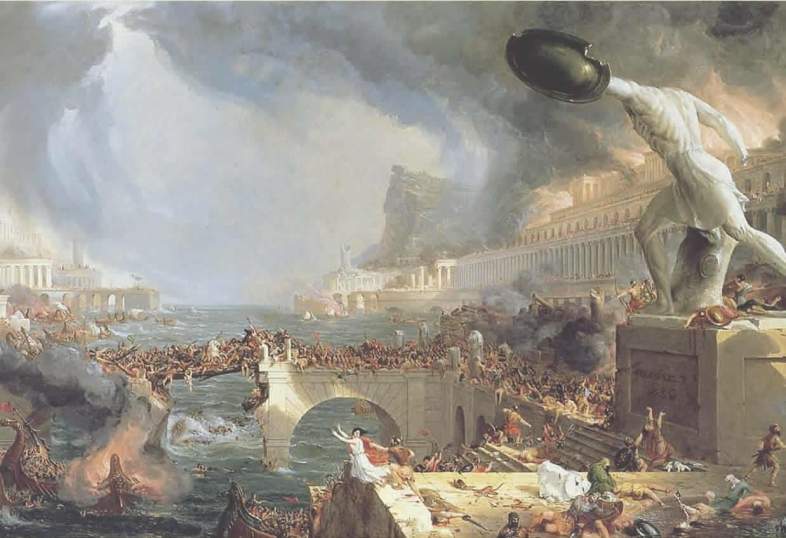
German barbarians were a handful to deal with even for an army as vast and well trained as Rome’s. So, they eventually did what all smart companies do facing a cost to benefit analysis. They outsourced having to fight hostile German barbarians to a certain population of other German barbarians who liked money more than they hated Romans. What resulted was German Goths coming to the rescue of small outlying Roman towns on the skirts of the empire and facing down members of other German tribes. This worked well for Rome for a while and they got to save blood and treasure for fighting other wars.
In addition, it swelled the ranks of the Roman army with non-Romans and eventually some of these non-Romans decided that they might want to actually be Roman citizens instead of just paid mercenaries. Too late, the Romans began to realize they’d created, trained, and armed a very real problem and reacted by slaughtering men, women, and children in Germanic villages. This did not go down well.
In the year 410, after repeated raids and conflict on the frontier, the Visigoths, led by famed Gothic commander Alaric I, sacked Rome. It was the first time the Roman capital had fallen in 8 centuries.
4. William Walker and his Filibuster Army
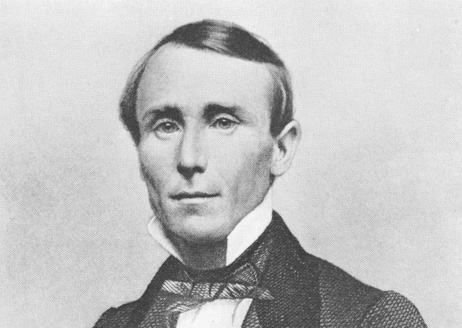
In one of the worst examples of “do whatever I want” Manifest Destiny expansions, William Walker, a vehemently pro-slavery attorney, took it on himself to start taking over areas of Latin America and declaring them slave territories.
Financing his adventure by essentially selling bonds, he briefly taking over Baja, California with 45 men in 1853 and declared it an independent nation just before being forced to withdraw as the Mexican army closed in on him.
But he was not to be deterred. In 1854, Walker insinuated himself into the Nicaraguan civil war and was contracted by the country’s president to fight for the government there. With 330 men he crushed the opposition but instead of handing power back to the Nicaraguan president he took over the country and declared himself President. Promptly initiating an “Americanization” policy, he reinstated slavery and declared English the official language of Nicaragua.
While reinstating slavery made him more popular with his White land-owning financial backers in the American South, it had the opposite effect in Central America. A coalition of Central American nations eventually forced him into submission but not before he intentionally set fire to the Nicaraguan capital.
Surrendering to the U.S. Navy, Walker was taken back to New York City where he was greeted as a hero.
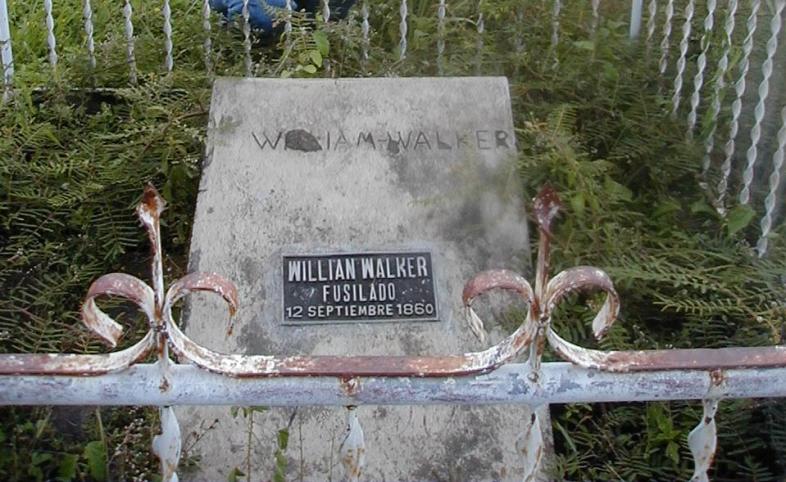
Trying this same takeover trick in Honduras in 1860 he was captured by the British and turned over to Honduran authorities who quickly made the decision to execute him. He was 36 years old.
5. The Business Plot
The business plot is odd. It was first revealed by Smedley Butler, the most highly decorated Marine in the institution’s history at the time and the very incarnation of American heroism. In 1934, with America still in deep Depression, he testified to Congress that he had been approached by several wealthy industrialists who had asked him to spearhead a coup against recently elected President Franklin D. Roosevelt.
Specifically, the plan was for Butler to tell FDR that he was to pretend polio had incapacitated him and form a new Cabinet of General Affairs which would be run by Butler and Wall Street. The alternative to this ultimatum was that Butler would lead an army of 500,000 veterans against the U.S. government and take it by force.
Butler had been chosen, he said, because of his popularity with veterans in the U.S. at large but, at the time, the press deemed the plot to be a hoax. Despite the press’s unwillingness to take the plot seriously, Congress eventually produced a final report indicating that the plot had been real.
It’s unknown if such a plot would have actually succeeded in taking control of the American government but there is little doubt that if anyone could have led such a coup it would have been Butler. Had the coup’s planners been able to rally 500,000 veterans as a private army aligned against the U.S. government then there would have either been all out war or an attempt by FDR to placate Butler. Given that the Great Depression was still in full swing at the time, it’s very possible that public support would have fallen behind Butler.
Butler had deemed the plot as an attempt by fascists to take over the country. Indeed, fascism was sweeping parts of Europe at the time and there were more than a few fascists in and among the ranks of Wall Street’s wealthy elite.
6. The Modern Merc Behemoth

G4S is a London-based security contracting company that just happens to also be the third largest private employer in the world. Their staff of 620,000 dwarfs the British army, being three times as large and only Walmart and Foxconn boast more employees. It got its start in 1901 Copenhagen, Denmark as a private security service.
However, these days, G4S isn’t what you’d call a specialized security company. It appears that they’ll generally do anything whether that’s allegedly attempting to crush worker movements in Indonesia, providing security for music concerts, or failing to live up to their obligations to provide security for the London Olympics in 2012. They do it all.
While dissimilar in many ways from the other organizations on this list, G4S employees man security stations all over the world, doing the work that governments don’t want to or can’t afford to do directly. They provide security at U.S. nuclear facilities, supply military equipment to Israeli prisons and man Israeli checkpoints, and have been known to use detained immigrants for nearly free labor in the UK. Like I said, they’ll do just about anything.
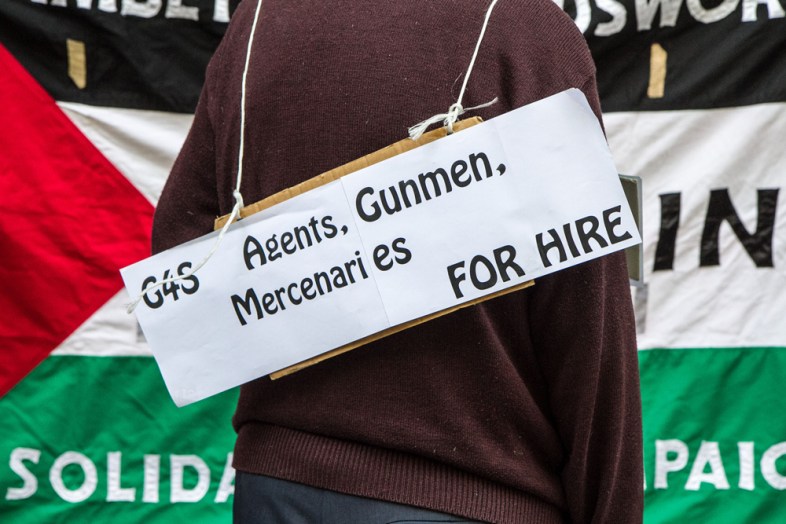
However, G4S isn’t exactly what I would call “star quality.” They’ve had a number of extremely embarrassing screw ups over the last decade including allowing an 82-year-old nun to slip unseen onto the grounds at Oak Ridge’s Y-12 nuclear facility. In many cases, they seem to provide mostly minimally trained individuals to do a good portion of their contract work. What’s more, the company management seems far more interested in making money than asserting influence which likely stems directly from the company stock being traded on the public market and being worth 4.4bn pounds. Vanity Fair reported in April of last year that the company had a lot of challenges even maintaining control of each of their subsidiaries.
Still, the company has 620,000 employees all over the world and in many cases they basically run the security infrastructure in highly strategic positions. Were they ever to flip the switch, they’re well placed to do a lot of damage.
6. The White Company
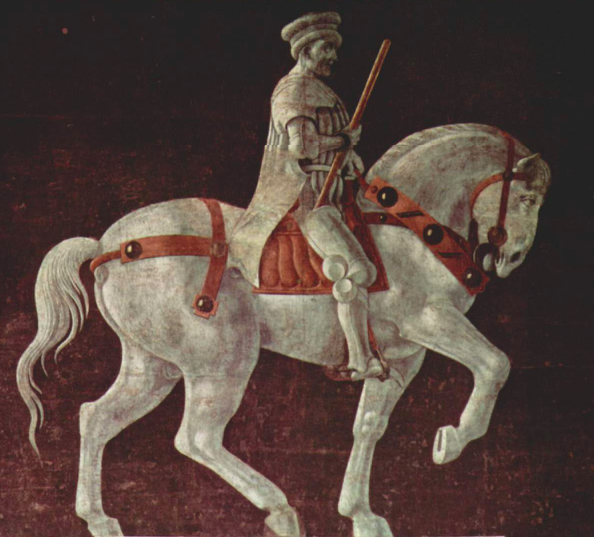
Begun by English soldier, Hundred Years War veteran, and absolute player John Hawkwood, the White Company was a mercenary group active primarily in France and Italy during the mid-1300s and boasted 3,500 cavalry and 2,000 infantry at its peak. However, unlike the Swiss Guard, Hawkwood’s group was anything but loyal to their paymasters. Given medieval Italy’s internal turmoil, the White Company had no problem working for one group for one contract and then turning around and working for an opposing faction next. Other times he would get a bid to serve one faction and then turn around and threaten another faction in order to get them to hire him instead, thus driving up the price. He also took payment for the White Company to stay out of any fighting altogether.
In this way, Hawkwood amassed an enormous personal fortune and was able to determine winners and losers among Italy’s rival factions.
7. The Knights Templar

While an independent Christian order, the Templars were mainly a favored charity that also happened to be a military organization answerable only to the Pope himself which made them a private army. They also helped fund the wars of some of Europe’s nobles, including France. In fact, besides their general wealth and wide-ranging power, the Church’s debt to the Knights Templar was one of the reasons the King Philip IV of France basically Order 66-ed them.
The Knights were the primary elite forces during the Crusades which began in 1099 and raged for 200 years. They were particularly awesome. In the famous Battle of Montgisaard, 500 Templars and a few thousand infantry defeated a muslim army of 26,000.
Since European Christendom depended on them so greatly, the Templars grew extremely wealthy, even diversifying themselves into banks of sorts which made them even wealthier. The Order was so well thought of because of their status as crusaders that they operated often as a state within a state. In the end, this independence was their undoing.
Owing the Templars a large amount of money for financing his wars with England and wanting to dilute the power of the Church, King Philip IV reached out to the Pope, his cousin, and conspired to trump up charges of heresy against the Order which would have the added effect of making sure he never had to pay them.
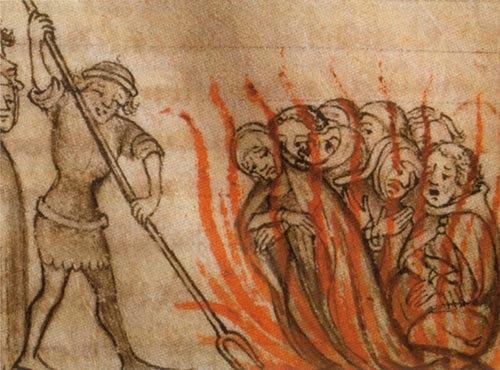
In 1312, the Order was dissolved and its members were killed, tortured, or forced to confess to heresies they hadn’t committed. For 200 years the Templars had been the most powerful independent army in Europe. Nearly overnight the institutions they founded, and which many people counted on, disappeared.
8. The Landsknecht
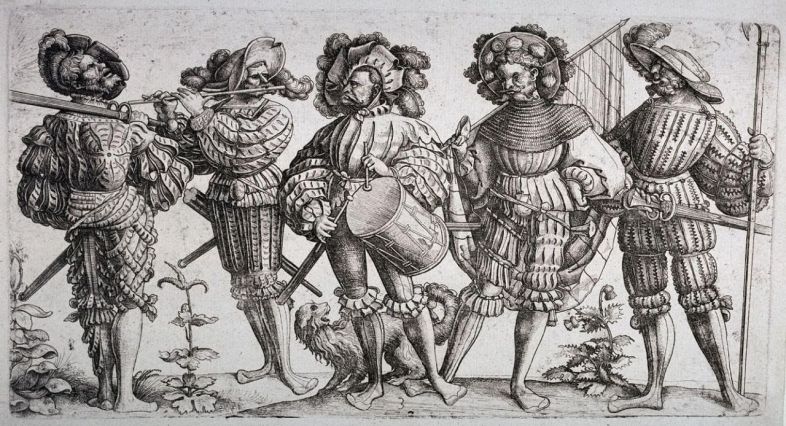
The only group on this list with their own song, the German Landsknechts (which essentially means ‘lowland foot-soldiers’) were the most powerful mercenary army of early modern Europe. They wore extremely colorful clothing while being the most devastating pikeman force on the continent and were one of the first groups to effectively use guns (Arquebus) and cannon fire in combat. They also used enormous two-handed swords nearly as tall as a man.
The first group of mercenary Landsknecht were formed by Holy Roman Emperor Maximillian in 1487 and they quickly proved to be an extremely popular group who fought in nearly every western European battle during the 16th century and sometimes were even hired and fought against one another. In fact, the different groups of Landsknecht made up such a high population of west Europe’s armies that had they joined into one fighting force the would likely have defeated whatever imperial army they came up against.
Fortunately, they liked money instead of ruling. In 1527, after not being paid for defeating the Italians on behalf of the Holy Roman Emperor, they marched on Rome itself, sacked the city, and got their money anyway.
All of these organizations, as spread throughout history as they are, were or continue to be potent forces capable of determining whether nations stood or fell. The one thing most of them have in common, however, is that they cared about money, not power. Once you take over a nation you’re suddenly in charge of running it. There’s money in that but also infinitely more complexity and difficulty. Mercenaries, then and now, want to make money and go home, not stick around and become targets themselves.
For that, we should all be glad. ![]()

